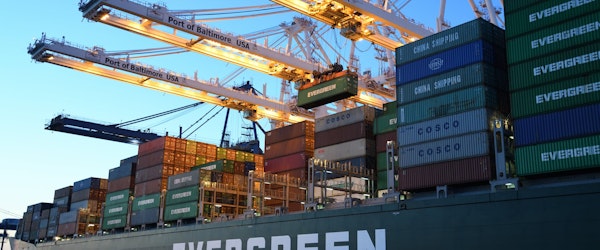
Rising Vessel Complexity and Size Escalate Risks in Global Marine Insurance Market
Monday, August 26th, 2024 Insurance Industry Marine Risk Management UnderwritingThe global marine insurance industry is encountering growing challenges as vessels continue to increase in size, value, and complexity. This evolution in maritime operations is leading to heightened risks that significantly impact the insurance market, particularly in the event of major losses. Wang Xing, a senior marine underwriter at Swiss Re Asia, in collaboration with the General Insurance Association of Singapore (GIA), highlights that the growing severity of potential losses is reshaping the landscape of marine insurance. These challenges are reflected in data from the International Union of Marine Insurance (IUMI), which shows that while only 2% of reported losses between Underwriting Years (UY) 2013 and 2021 exceeded $10 million, these major losses accounted for a substantial 29% of the total loss amount.
The disproportionate effect of major losses underscores a significant shift in the industry, where large, infrequent claims now have a more profound impact on the market than smaller, more frequent ones. This dynamic creates a scenario where insured parties find that a significant portion of their premiums is allocated to cover the risk of these potential major losses, rather than the more predictable attritional losses. As a result, premium calculations have become increasingly influenced by the possibility of severe claims, adding a layer of volatility to the market that affects all participants, regardless of their individual loss history.
Historical events such as the Costa Concordia disaster in 2012 and the Suez Canal blockage by the Ever Given in 2021 illustrate the catastrophic financial impacts that major losses can have on the marine insurance industry. These incidents not only resulted in massive insurance claims but also had far-reaching effects on global trade and supply chains, further demonstrating the interconnected nature of the risks involved.
Xing notes that while it may be difficult to predict the severity of losses for any given underwriting year, a long-term perspective is essential to managing risk effectively. Data from IUMI and the Nordic Marine Insurance Plan (CEFOR) suggests that a major loss ratio of 10-20% is generally considered acceptable in marine hull insurance, indicating that insurers must plan for such events over extended periods to maintain stability in their portfolios.
In addition to the challenges posed by major losses, the marine insurance market is also affected by fluctuations in hull values, changes in direct market insurance capacity, and broader economic factors such as inflation. These elements contribute to performance volatility within the marine insurance cycle, particularly during soft cycles characterized by reduced hull values, lower premium rates, and market overcapacity. The interplay of these factors complicates the landscape for marine hull insurers, making it crucial to understand and anticipate the evolving risks in this complex and dynamic environment.
As the industry continues to adapt to these challenges, experts like Wang Xing and organizations such as Swiss Re Asia and GIA Singapore emphasize the importance of a comprehensive understanding of these dynamics. This knowledge is vital for insurers to navigate the growing risks and volatility associated with the increasingly complex marine environment, ensuring the long-term stability and sustainability of the global marine insurance market.





